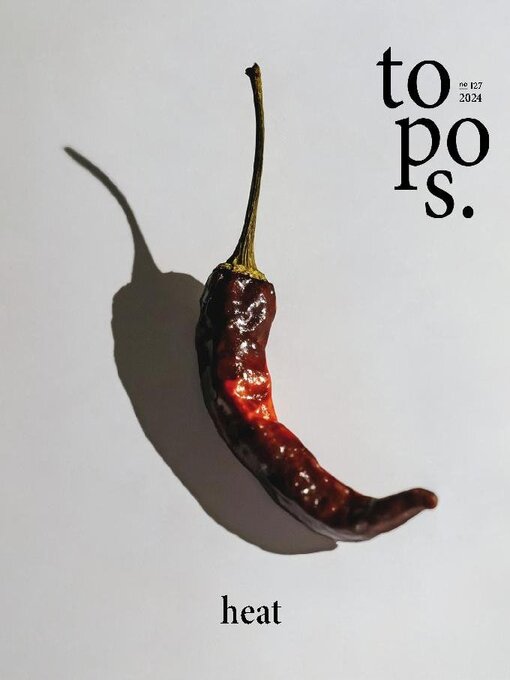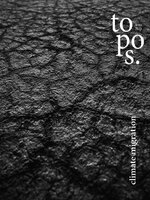Topos is a must-have for successful landscape architects, planners, urban designers and architects all over the world.The monothematic issues provide a global overview of innovative projects, new developments and trends in the profession. Be part of the worldwide community of Topos readers!
THE INTERNATIONAL REVIEW OF LANDSCAPE ARCHITECTURE AND URBAN DESIGN
Editor’s Note
α
MIND THE HEAT GAP • Will the urban heat island effect in future only be a burden for poor people in? Studies show that poor people in cities already suffer much more from heat than wealthier sections of the population. Could the fight against heat islands therefore increasingly become a kind of devilish marketing tool?
Summer Heat Hits Asia
Medellín • Medellín is known as the city of eternal spring. Lately, however, it is on the verge of becoming a permanent summer valley with high temperatures. To reverse this trend, we need urban planning and a combination of measures that include the increase of public spaces with high environmental quality, tree planting, low vegetation, gardens, absorbent natural floors, and urban projects with tropical architecture.
Elissavet Bargianni
β heat
Melting Cities • Our increasingly hot cities and metropolises affect everyone, regardless of their origin, skin color or other characteristics – or so you might think. But far from it, because as with many other things, marginalized groups that are already weakened suffer particularly from the increasingly hot cities. How urban heat kills minorities and what can be done about it.
URBAN HEAT ISLAND EFFECT • Urban cores retain heat for a variety of reasons, creating a heat island effect. Canadian researchers illustrated the difference between rural areas, leafy neighborhoods and downtown areas with the following summer example.
FIGHTING THE HEAT WITH GREENERY AND CLAY • Monsoon and Harmattan – these two powerful winds primarily determine the climate in Burkina Faso. And thus also the changing scenery of the landscape. While the monsoon blowing from the southwest brings warm, humid air and precipitation in summer, the trade wind Harmattan from the Sahara causes the long dry season in winter. How a country where the sun shines frequently and rain is a rare resource tackles the challenges of global warming with clay and green.
HOW TO COOL A TROPICAL CITY • Kuala Lumpur, the vibrant capital of Malaysia, is a city of contrasts, characterized by its rich cultural diversity, impressive architecture and lively atmosphere. As the cultural and economic center of the country, it attracts visitors from all over the world who are fascinated by everything from the modern skyscrapers to the traditional markets and temples. For many visitors from Western countries, however, one thing is likely to remain at least as memorable after a visit to Kuala Lumpur as all the cultural treasures and exotic impressions: the heat.
UN(BE)LIVEABLE • A World Bank report entitled “Unlivable: What the Urban Heat Island Effect Means for East Asia’s Cities” warns of the consequences of climate change: Cities in East Asia could soon become uninhabitable due to the heat. But comfort and fear of change still have the upper hand. If we continue to pass on responsibility to future generations, change will only happen when it is too late. A pessimistic look into the future of our doomed planet.
CLIMATE-FRIENDLY PROJECTS AROUND THE WORLD • To cope with the increasingly severe heat in our cities, a large number of innovative projects are being launched all over the world. The trend is towards green cities, and where possible, blue infrastructure is also becoming increasingly important. We take a look at a selection of interesting projects.
MERGING CITY AND NATURE • Designing open spaces as pleasant and comfortable areas that enhance...

 N. 132
N. 132
 N. 131
N. 131
 N. 130
N. 130
 N. 129
N. 129
 N. 128
N. 128
 N. 127
N. 127
 N. 126
N. 126
 N. 125
N. 125
 N. 124
N. 124
 N. 123
N. 123
 N. 122
N. 122
 N. 121
N. 121